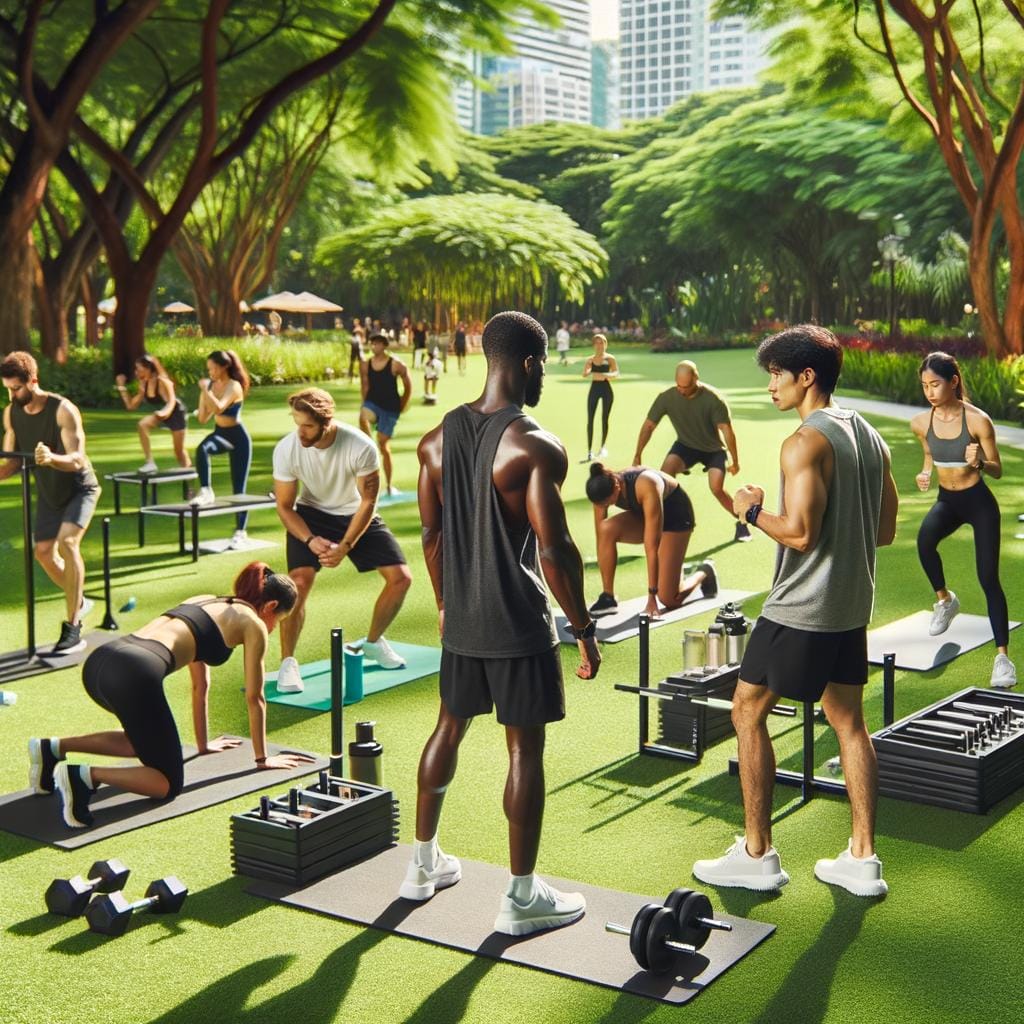Climbing fitness is a crucial aspect of excelling in the sport of climbing. The physical demands of climbing require climbers to have strong muscles, endurance, flexibility, and overall fitness. In this article, we will delve into the significance of physical fitness in climbing and how it can enhance performance on challenging routes.
Being physically fit not only improves climbing performance but also reduces the risk of injuries that can occur during climbs. Climbers who prioritize their fitness level often find that they have more stamina, strength, and agility on the walls. Whether scaling outdoor rock faces or tackling indoor climbing walls, having a high level of climbing fitness can make a significant difference in achieving your goals as a climber.
In the following sections, we will explore the benefits of climbing fitness in detail, identify key muscle groups essential for climbing and provide tips on how to strengthen them. Additionally, we will discuss various training techniques specifically tailored for climbers to enhance their fitness levels. By understanding the importance of physical fitness in climbing and implementing targeted workouts and nutrition strategies, climbers can take their skills to new heights while staying injury-free.
Benefits of Climbing Fitness
The benefits of climbing fitness extend far beyond just looking toned and fit. Being physically fit is crucial for improving climbing performance in a variety of ways. One significant advantage of being in top physical condition is the ability to climb longer and with more endurance.
Endurance is key in climbing, especially on long routes or during multi-pitch climbs where stamina is essential. By improving cardiovascular fitness through activities like running, cycling, or swimming, climbers can enhance their endurance levels and tackle longer climbs with ease.
Moreover, strength training plays a vital role in climbing fitness. Strong muscles are needed to maneuver overhangs, pull up on small holds, or balance on precarious foot placements. By targeting specific muscle groups such as the forearms, back, core, and legs through weightlifting or bodyweight exercises like pull-ups and planks, climbers can build the necessary strength to conquer challenging routes.
Additionally, flexibility is another aspect of physical fitness that greatly benefits climbers. Stretching regularly can improve range of motion, reduce the risk of injury, and allow for smoother movements while climbing.
Incorporating cross-training into a climber’s fitness routine can also lead to overall improvement in climbing performance. Activities like yoga or Pilates can help enhance flexibility and core strength, which are crucial components for successful climbing movements.
Furthermore, focusing on functional training exercises that mimic climbing movements can translate directly to improved performance on the wall. Overall, maintaining a well-rounded approach to climbing fitness that includes endurance training, strength workouts, flexibility exercises, and cross-training will undoubtedly elevate a climber’s abilities on the rock.
| Importance of Climbing Fitness | Detailing How Being Physically Fit Can Improve Climbing Performance |
|---|---|
| Improved endurance for longer climbs | Strength training for tackling difficult moves |
| Enhanced cardiovascular fitness | Flexibility for better range of motion |
| Cross-training benefits for overall performance | Functional training exercises for specific climbing movements |
Key Muscles Used in Climbing
Climbing is a physically demanding sport that requires strength, endurance, flexibility, and coordination. When it comes to climbing fitness, understanding the key muscles used in climbing is essential for improving performance and preventing injuries. One of the primary muscle groups involved in climbing is the upper body muscles, including the forearms, biceps, triceps, shoulders, and back muscles. These muscles are crucial for pulling and lifting your body weight during climbs.
In addition to the upper body muscles, core strength is paramount in climbing fitness. A strong core helps with stability and balance while climbing on various terrains. The abdominal muscles, obliques, and lower back muscles play a significant role in maintaining proper body positioning and posture during climbs. Strengthening these core muscles through specific exercises like planks, leg raises, and Russian twists can improve overall climbing performance.
Furthermore, lower body strength cannot be underestimated when it comes to climbing fitness. The quadriceps, hamstrings, glutes, and calf muscles are vital for pushing off from footholds and maintaining balance on the wall. Exercises such as squats, lunges, calf raises, and deadlifts can help strengthen these lower body muscle groups. By incorporating a well-rounded workout routine that targets all these key muscle groups used in climbing, climbers can enhance their overall fitness levels and excel in their sport.
| Key Muscle Groups | Exercises to Strengthen |
|---|---|
| Upper Body Muscles (forearms, biceps triceps) | Pull-ups Shoulder presses |
| Core Muscles (abdominals obliques lower back) | Planks Mountain climbers |
| Lower Body Muscles (quadriceps hamstrings glutes calves) | Squats Deadlifts |
Training Techniques for Climbers
Strength Training
One of the key components of climbing fitness is strong muscles. To improve strength, climbers should focus on exercises that target the muscle groups most used in climbing. This includes exercises such as pull-ups, push-ups, planks, and squats. Incorporating weight training into your routine can also be beneficial for building overall strength and power.
Endurance Training
Endurance is crucial for climbers, as many routes require sustained effort over a period of time. To improve endurance, climbers can incorporate activities like running, cycling, or swimming into their training regimen. Additionally, bouldering or traversing on indoor climbing walls can help build endurance specific to climbing movements.
Flexibility and Mobility Training
Flexibility and mobility are essential for climbers to move efficiently and avoid injuries. Stretching regularly can help improve flexibility, while incorporating yoga or Pilates into your routine can enhance mobility. Foam rolling and self-myofascial release techniques can also help alleviate tightness in muscles caused by intense climbing workouts.
By incorporating a combination of strength training, endurance training, flexibility work, and mobility exercises into their training regimen, climbers can improve their climbing fitness levels and enhance their performance on the wall. It is important to tailor workouts to individual goals and abilities while also seeking guidance from experienced climbers or fitness professionals to ensure safe and effective training practices.
Nutrition for Climbing
Nutrition plays a crucial role in supporting climbing fitness and overall performance. Proper fueling can make a significant difference in how climbers tackle challenging routes and maximize their potential. Fueling the body with the right nutrients not only improves endurance but also helps with muscle recovery, strength, and mental focus during climbs. Here are some key aspects of nutrition that climbers should consider to enhance their climbing performance:
- Hydration: Staying well-hydrated is essential for climbers as dehydration can lead to fatigue, muscle cramps, and decreased performance. It’s important to drink plenty of water before, during, and after climbing sessions to maintain optimal hydration levels.
- Carbohydrates: Carbs are the primary source of energy for climbers and should make up a significant portion of their diet. Opt for complex carbohydrates like whole grains, fruits, and vegetables to provide sustained energy throughout climbs.
- Protein: Protein is crucial for muscle repair and growth, making it essential for climbers to support their training efforts. Include lean protein sources such as chicken, fish, tofu, or legumes in your meals to optimize recovery and strength building.
In addition to macronutrients like carbohydrates and protein, climbers should also pay attention to micronutrients like vitamins and minerals that play vital roles in energy production, immune function, and overall health. Ensuring a well-rounded diet with a variety of fruits, vegetables, nuts, seeds, and whole foods can help climbers meet their nutritional needs and support their climbing goals.
Tips for Fueling Your Climbing Adventures
- Plan your meals ahead of time to ensure you have proper fuel for your climbs.
- Snack on high-energy foods like trail mix or energy bars during long climbing sessions to maintain stamina.
- Avoid sugary snacks or processed foods that may cause energy crashes during climbs.
Preventing Injuries
Importance of Injury Prevention
In the world of climbing, preventing injuries is crucial not only for maintaining peak performance but also for ensuring long-term health and safety. Climbing puts a significant amount of strain on the muscles, tendons, and joints, making climbers susceptible to a range of common injuries such as tendonitis, sprains, strains, and overuse injuries. By focusing on injury prevention through proper training and conditioning, climbers can avoid setbacks that may hinder their progress and enjoyment of the sport.
Proper Warm-Up and Cool-Down
One of the most effective ways to prevent climbing injuries is by incorporating a thorough warm-up and cool-down routine into your climbing sessions. A good warm-up helps prepare the muscles for the intense physical activity ahead by increasing blood flow, flexibility, and range of motion.
Dynamic stretching exercises like arm circles, leg swings, and trunk twists can help loosen up tight muscles and joints before climbing. Conversely, a proper cool-down routine consisting of static stretching and gentle movements can help reduce muscle stiffness and prevent post-climbing soreness.
Cross-Training and Rest Days
In addition to specific climbing workouts, cross-training activities can be beneficial for improving overall climbing fitness while reducing the risk of overuse injuries. Incorporating activities such as yoga, weight training, running, or swimming into your training regimen can help strengthen different muscle groups to enhance your performance on the wall.
It’s also important to allow for adequate rest days in between climbing sessions to give your body time to recover and repair itself. Overtraining can lead to fatigue, decreased performance, and increased susceptibility to injuries, so listen to your body’s cues and prioritize rest as part of your injury prevention strategy.
Mental Fitness in Climbing
As climbers, we often focus on the physical aspects of our sport – building strength, improving technique, and increasing endurance. However, it is equally important to address the mental side of climbing. Mental fitness plays a crucial role in overall performance and can significantly impact our success on the walls. Here are some key points to consider when it comes to understanding the psychological aspects of climbing and how mental strength contributes to overall fitness:
1. Visualization Techniques: One powerful tool for climbers is visualization. By mentally rehearsing climbs before attempting them, you can improve your focus, confidence, and strategy. Visualizing successful ascents can help reduce anxiety and increase your chances of completing challenging routes.
2. Fear Management: Climbing inherently involves an element of fear. Whether it’s fear of falling, fear of failure, or fear of heights, learning how to manage these fears is essential for mental fitness in climbing. Techniques such as controlled breathing, positive self-talk, and gradual exposure can help climbers overcome their fears and perform at their best.
3. Goal Setting: Setting clear and achievable goals is another important aspect of mental fitness in climbing. By establishing both short-term and long-term objectives, you can stay motivated, track your progress, and push yourself to new levels of performance. Goals should be specific, measurable, realistic, and time-bound to be effective in driving your climbing fitness forward.
Overall, mental fitness is just as important as physical fitness when it comes to excelling in the sport of climbing. By incorporating strategies such as visualization techniques, fear management skills, and goal setting practices into your training routine, you can enhance your overall climbing performance and reach new heights in your abilities on the walls.
Climbing Fitness Resources
In conclusion, climbing fitness is a crucial aspect of excelling in the sport of climbing. By focusing on physical conditioning, climbers can significantly enhance their performance and reach new heights in their climbing endeavors. Strengthening the key muscles used in climbing, such as the forearms, back, and core, through specific exercises and workouts is essential for improving overall climbing fitness.
Additionally, maintaining a proper diet rich in nutrients is vital for climbers to fuel their bodies for intense climbs and ensure they have the energy needed to tackle challenging routes. By combining physical training with nutrition, climbers can optimize their climbing fitness levels and achieve greater success on the rock wall while also preventing injuries through proper conditioning.
Furthermore, mental fitness plays a significant role in climbing performance. Developing psychological resilience and mental strength is essential for overcoming challenges and pushing past limitations while climbing. By utilizing the recommended resources for climbing fitness, including books, websites, and other materials specifically tailored to climbers looking to improve their physical conditioning, individuals can take their climbing abilities to the next level and enjoy a safer and more rewarding experience on the rock wall.
Frequently Asked Questions
Can You Get Fit Just From Climbing?
Climbing can be a great way to get fit due to the full-body workout it provides. It strengthens muscles in the arms, shoulders, back, and core while also improving cardiovascular fitness. Additionally, climbing requires mental focus and agility, making it a well-rounded exercise.
Are Climbers a Good Workout?
Climbing is definitely a good workout for many reasons. It challenges both strength and endurance, encourages problem-solving skills, and improves flexibility and balance. Climbers often notice improvements in muscle tone, stamina, and overall physical fitness with regular practice.
Is Climbing a Good Way to Lose Weight?
Climbing can be an effective way to lose weight when combined with a healthy diet and consistent exercise routine. The high-intensity nature of climbing burns calories efficiently and helps build lean muscle mass, which can boost metabolism and aid in weight loss efforts. Plus, the mental engagement involved in climbing can make it an enjoyable alternative to traditional workouts.

An avid outdoor enthusiast, writer, and environmental advocate who has spent over two decades exploring the world’s most breathtaking landscapes. With a background in environmental science and a passion for adventure, Frances combines her love for nature with her talent for storytelling to inspire others to embark on their own outdoor journeys.





